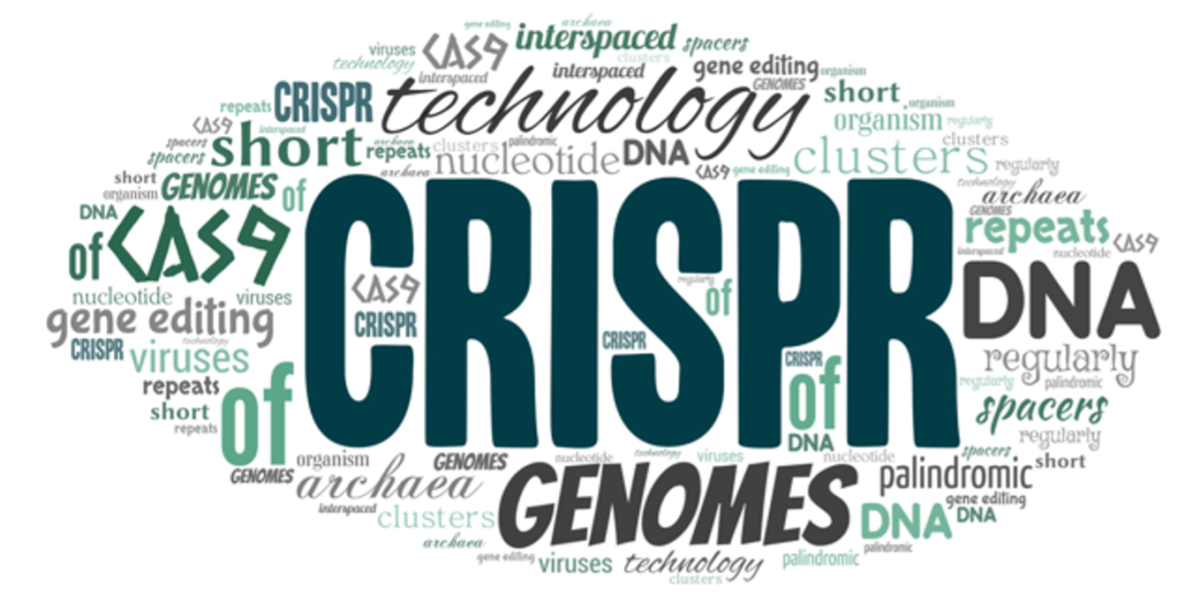Decoding the controversy of gene editing
By Chloe Tenn and Sam Bronheim

The uses of gene editing have been clouded with controversy ever since the technology was first developed in the 1970s. Originally, as with many new discoveries (evolution, anyone?), the concept was met with hesitancy, and slowly gained interest and acceptance. But this came to a crashing halt in 1999 following the death of 18-year-old Jesse Gelsinger. The scientific community stayed relatively quiet on gene therapy after that in attempt to shy from contentious limelight that threatened the reputation of genetic research. However, the media and science fiction never failed to keep the concept in people’s minds, forwarding negative frames of gene editing technology that kept the embers of bioethical debates aflame.
Today, phrases like “designer babies” still stir up fervent dinner table debates. These conversations were reignited by the breakthrough gene-editing tool CRISPR-Cas9 that emerged in 2012. However this potentially life-saving technology is often discredited and plagued by misinformation. With the doors reopened for gene editing to return to the forefront of modern medicine, it’s crucial to learn about the correct facts and information that can decode this controversy.
The history of genes and gene editing technology
Following the discovery of the DNA double helix in 1953, the dominating research questions that emerged aimed to understand more about the microscopic code in our bodies. DNA is organised into thousands of genes and each one contains the instructions to create an element of you. Everything from the shape of your cells to your eye colour is influenced by your DNA.
By the 1970s scientists around the world were fascinated by using the recent discoveries of gene understanding to consider the possibilities of genetic engineering. The technology boomed in the subsequent decade. In 1982, bacteria was engineered to produce synthetic human insulin (the hormone needed to breakdown glucose). In 1988, pest-resistant corn was available for the first time. As a result, most crops are genetically modified in some way today. Of course, one of the most famous examples of genetic engineering is the famous cloning of Dolly the Sheep in 1996. From glow-in-the-dark pets to tomatoes that stayed ripe, suddenly everything seemed possible. The obvious next step was to apply the technology to humans.
The first gene therapy trial was approved in 1990 to treat a four-year-old girl suffering from an immune system deficiency called SCID. The researchers concluded that there was room for improvement, but overall was a “safe and effective addition to treatment for some patients with this severe immunodeficiency disease”. She was not cured, but it was definitely a promising start for human gene therapy.
The viral story of Jesse Gelsinger
Experimental trials took place throughout the 1990s to varying degrees of success, but no outcome was as devastating as the death of Jesse Gelsinger. Jesse was being treated with experimental gene therapy for a rare metabolic condition called ornithine transcarbamylase deficiency which leads to a toxic buildup of ammonia in the blood.
One widely used method for gene therapy is to use a non-threatening virus as a carrier, called a vector, to ‘deliver’ undamaged copies of the targeted gene to the cells. This method was used to treat Jesse. Even though the viral vector used for could not make him ill, Jesse’s body recognised the vector as foreign and his immune system responded drastically to it. It was this inflamed response that ultimately led to his tragic death. The medical catastrophe plunged gene editing into unending debate revolving around the blurred lines between medical progress and peril.
The biggest obstacle for gene therapy is delivering the new genes to the cells, as the environment of the blood stream is unpredictable and under constant surveillance by the immune system. And though this problem persists with modern gene therapy tools, they do not require a viral vector. This removes the risk of an intense immune response. The improvements of gene editing technology over time have been developed with this controversy in mind, acutely aware of implications to human health and safety.
CRISPR-Cas9
This revolutionary technology was discovered in 2012 by the Nobel Prize winners Jennifer Doudna and Emmanuelle Charpentier and has transformed the ability to edit genes.
Though promising, this too drew controversy following the questionable experiements carried out by He Jiankui in 2018. He originally claimed that he had created the first genetically modified babies, a set of twins whose altered genes to made them immune to HIV. We now know the He misled couples into receiving IVF and experimented on the embryos unethically. What’s more is that there is no evidence that the twin girls are in fact immune, and little is known about what the effects are of He’s manipulation. In 2019, He was sentenced to three years in prison, where he currently remains. So far, he is the only scientist to take such drastic strides into the unknown realm of gene editing. For now.
Approaching the future of gene therapy without fear
So yes, designer babies are a reasonable bioethical concern to hold. But like any new field of science, legislation is emerging. With gene editing technology, it’s technically possible to change physical characteristics eye or skin colour. However, the positive potential of gene editing technqiues should not be underscored.
CRISPR-Cas9 could remove damaged or variant genes which could treat, prevent or even cure some diseases. Gene therapy will be essential in finally conquering some seemingly incurable conditions. So we encourage the heated discussions with your friends and family over the ethics of what seems like science fiction, but make sure not overlook what it could mean for medicine, and the lives it could save.







